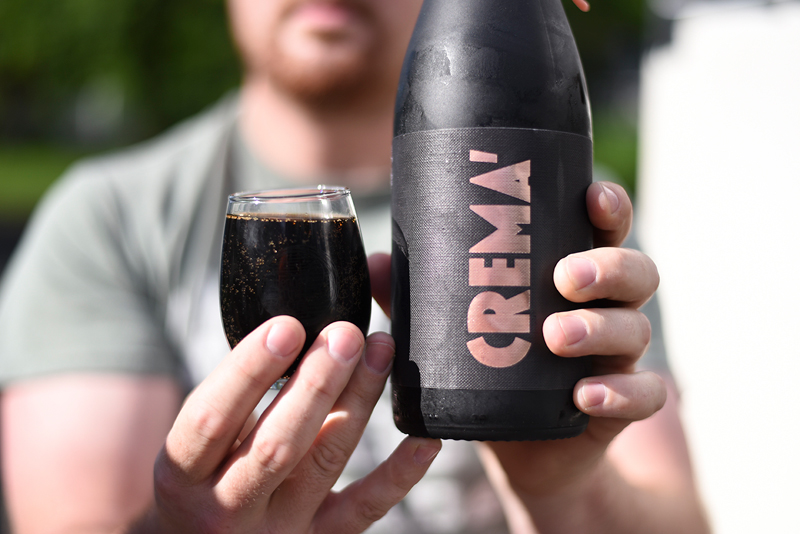PHOTOS BY LOUIS LIVINGSTON-GARCIA
Drink a Forager Brewing Co. barrel-aged beer before it has rested on adjuncts like vanilla or coffee, and before it’s been set aside in a barrel to age for months or years, and you might turn your nose up.
These stout bases are not meant to be imbibed; Forager specifically has beer recipes meant to go into barrels or rest on adjuncts. These base recipes are thick like syrup, bitter, roasty, or chocolatey. Sometimes they are spicy. And the aroma is best described as a heavy, bitter, dark chocolate.
“We are brewing these base recipes to be different, and know they will need a long time before they are ready,” Forager head brewer and co-founder Austin Jevne explains. “They aren’t very good fresh.”
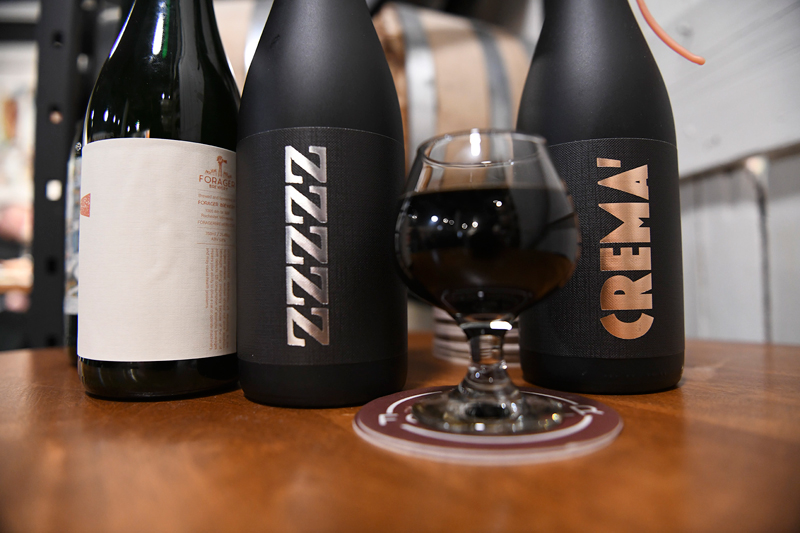 Once finished and released, a $50 bomber of Forager barrel-aged stout is sold only on site and will be highly coveted. For example: the beer that gave Forager national attention in the beer scene, batch one of Nillerzzzzz (each z represents a vanilla bean variety from a different growing region) was valued at $350 on the secondary beer market after its release in June 2018. 2018’s releases of Nillerzzzzz, Freedom Toast, and Nook is when Forager started to see hundreds of people lined up along the frontage road it sits next to in Rochester, Minnesota.
Once finished and released, a $50 bomber of Forager barrel-aged stout is sold only on site and will be highly coveted. For example: the beer that gave Forager national attention in the beer scene, batch one of Nillerzzzzz (each z represents a vanilla bean variety from a different growing region) was valued at $350 on the secondary beer market after its release in June 2018. 2018’s releases of Nillerzzzzz, Freedom Toast, and Nook is when Forager started to see hundreds of people lined up along the frontage road it sits next to in Rochester, Minnesota.
To put that in perspective, higher-end releases from breweries like Toppling Goliath can reach or even exceed $1,000 for rare bottles like SR-71 or KBBS. But typically, Nillerzzzzz is right alongside some of the rarest and most highly sought after beers on the market.
While Forager has won numerous awards, it’s mostly the word of mouth on Facebook that really pushes demand (and value) up. And in 2018, Nilerzzzzz did earn the honor of Minnesota’s highest rated beer on Beer Advocate.
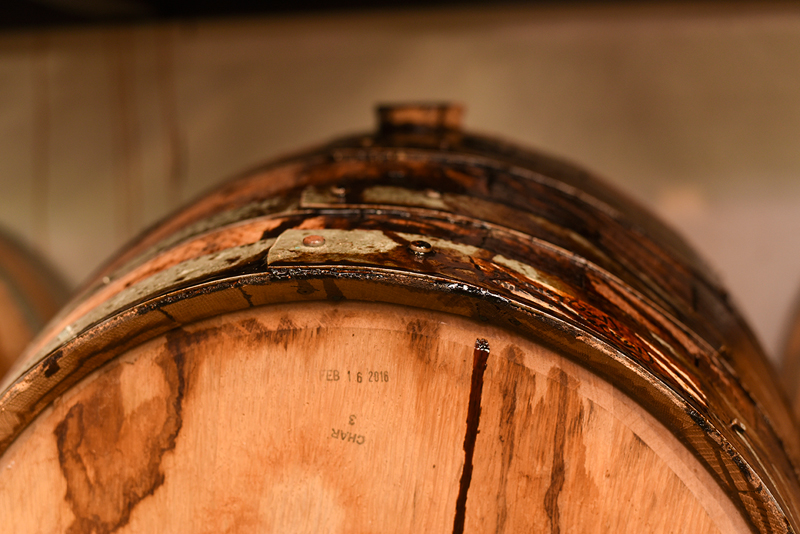 Making a thick, rare, barrel-aged beer
Making a thick, rare, barrel-aged beer
It takes a lot of effort, money, and patience to make a beer to turn heads at beer shares. And if you ask hardcore beer fans locally and across the country who are constantly trading and chasing rare releases, in Minnesota, only Forager and Barrel Theory are in that elite brewery club.
To get to that point, Jevne (below) has to take a lot of steps. And wait, and wait, and wait.
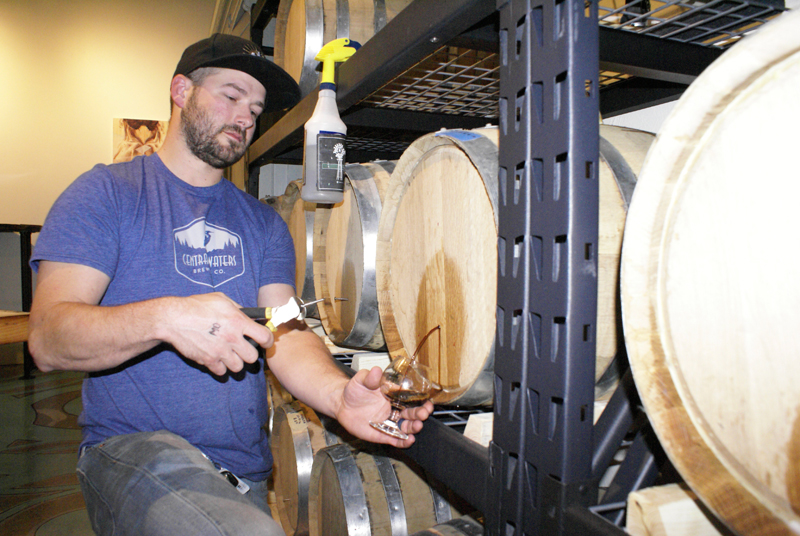 After brewing up one of the barrel-aged beer recipes, the beer will rest in a tank on adjuncts possibly for months, taking up vital space in the brewhouse. Jevne said that in the time one beer is resting they could push out multiple IPAs, perennial money makers. Up to four tanks might be sitting with stout inside of them at a time. Forager is a smaller brewery with limited space, so this is a sacrifice.
After brewing up one of the barrel-aged beer recipes, the beer will rest in a tank on adjuncts possibly for months, taking up vital space in the brewhouse. Jevne said that in the time one beer is resting they could push out multiple IPAs, perennial money makers. Up to four tanks might be sitting with stout inside of them at a time. Forager is a smaller brewery with limited space, so this is a sacrifice.
Ingredients are often of the highest quality. Jevne will never use vanilla extract, for example, and can taste it in beers that use it. And he uses a lot of adjuncts like vanilla beans from multiple growing regions, hazelnut, Mostra coffee, locally sourced fruit, cacao nibs and more, because that is what people are lining up and looking for. He puts beer in small barrels which are more expensive. Those barrels take up valuable dining space.
 “It’s a loss of income for our business to do a barrel-aged program inside our restaurant,” Jevne said. “If we just sold golden ale to people at our tables we’d make more money.”
“It’s a loss of income for our business to do a barrel-aged program inside our restaurant,” Jevne said. “If we just sold golden ale to people at our tables we’d make more money.”
And sometimes the adjunct eats up yields.
“When you put coconut in a barrel-aged stout you lose so much beer to absorption,” Jevne said. “170 out of 220 gallons comes out.”
Grove is a prime example. It was the most expensive of the brewery’s beers to make, featuring hazelnuts, coconut, vanilla beans, cocoa nibs, and coffee from Mostra, which seems to be used in all the top-tier barrel-aged stouts these days.
“We pretty much didn’t make any money off of that beer because there was so much in it and so much loss from those adjuncts,” Jevne said. Sometimes only 250 bottles of these rare beers are released, sometimes upwards of 800.
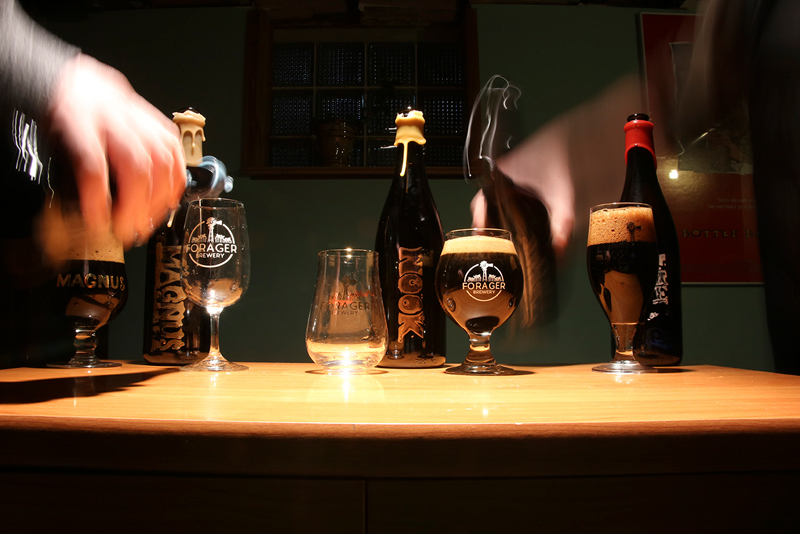 Beer Worth Flying For
Beer Worth Flying For
This dedication, and Forager typically throwing some sort of fest or party for releases, in addition to people sharing beers in line, has made it a destination that people fly into Minnesota for.
Philadelphia street artist Gino Spencer is one such person. He kept seeing Forager make the rounds in his online beer groups, was intrigued by the painted labels, and had to visit Forager for the Crema release and Gathering in the Wood festival last year.
“Word was being spoken that Magnus was flames,” Spencer said of Forager’s very first barrel-aged stout release. “When you visit the brewery, it’s like being introduced to the family. Everyone greets with love and happiness.”
Brandon Scott Lord is another fan who flew from a town north of Houston to pick up a set of barrel-aged beers from Forager.
 “Forager’s barrel program is fantastic,” he said. “From ‘basic’ BA beers to adjunct-loaded variants, they somehow seem to nail every beer they release. I’ve had a decent amount of the big guys (Angry Chair, Bottle Logic, Prairie Artisan Ales, etc.)… and Forager’s are consistently among my favorites.”
“Forager’s barrel program is fantastic,” he said. “From ‘basic’ BA beers to adjunct-loaded variants, they somehow seem to nail every beer they release. I’ve had a decent amount of the big guys (Angry Chair, Bottle Logic, Prairie Artisan Ales, etc.)… and Forager’s are consistently among my favorites.”
One more fan has flown in to town from San Francisco twice for releases, and gets to the point quickly.
“Forager is up there with the best breweries in the country, and their best beer deserves to be in the conversation as some of the best available,” Daniel Ko said. “Their stouts particularly are always so flavorful and well balanced even when using a wide variety of adjuncts.”
Forager just had two lotteries for its latest barrel-aged beer releases. As always, many entered, but only 250 won the first bottle set, and 450 the second. Lower bottle allotments are due to COVID-19 and are meant to reduce the number of people at the brewery to make a safer release.
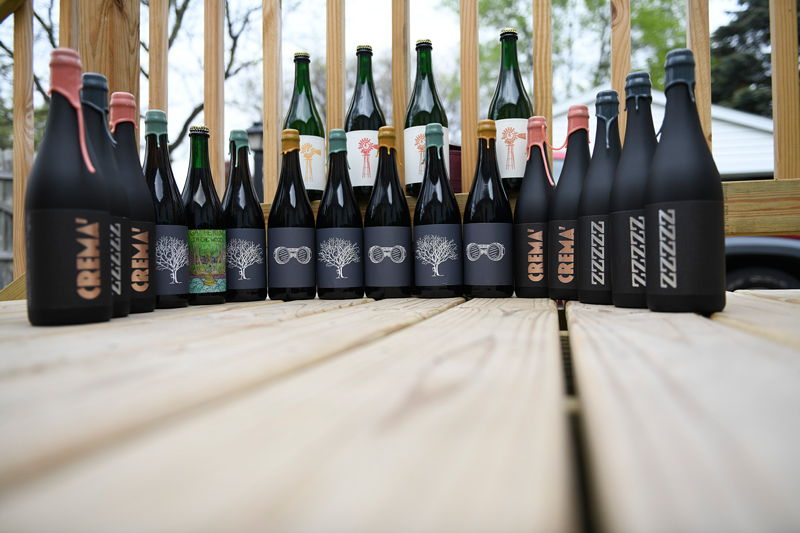 But even those numbers aren’t really low considering the control Jevne wants to exercise over batch sizes. Forager most likely won’t ever have many bottles of Nillerzzzzz, Kitten Treats, or Kent the Otter for sale.
But even those numbers aren’t really low considering the control Jevne wants to exercise over batch sizes. Forager most likely won’t ever have many bottles of Nillerzzzzz, Kitten Treats, or Kent the Otter for sale.
“We always get the question of, ‘why don’t you make more?’ But we aren’t going to dilute it to have more,” Jevne said. “Because that’s not what you want to come buy.
“Our philosophy with barrel aging beer is not to brew a beer with a name and then release that beer in six months, 12 months, 24, whatever,” he continues. “It’s to put those beers in a variety of sizes of barrels, wood types, distillery makes, and let the beer decide what it wants [if a stout in a barrel has more of a vanilla flavor, it might end up with vanilla beans, but it depends on how the beer develops in a barrel]. We aren’t taking the one base beer and making it for something we named 18 months ago. We want to make beers that are unique, that we love.”
See this Friday’s Tap newsletter for writer Louis Livingston-Garcia’s how-to on finding and acquiring some of the country’s rarest beers.
This story was updated 9-16-20 to correct the name of Brandon Scott Lord.

